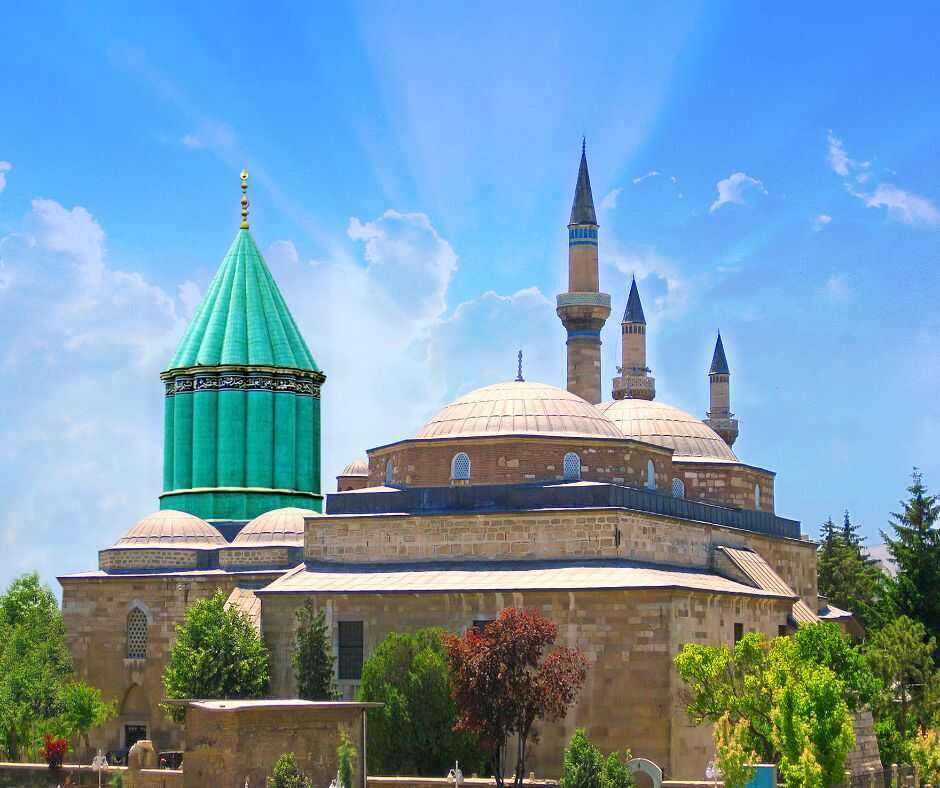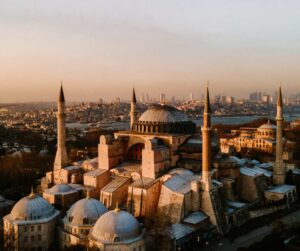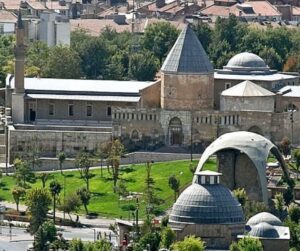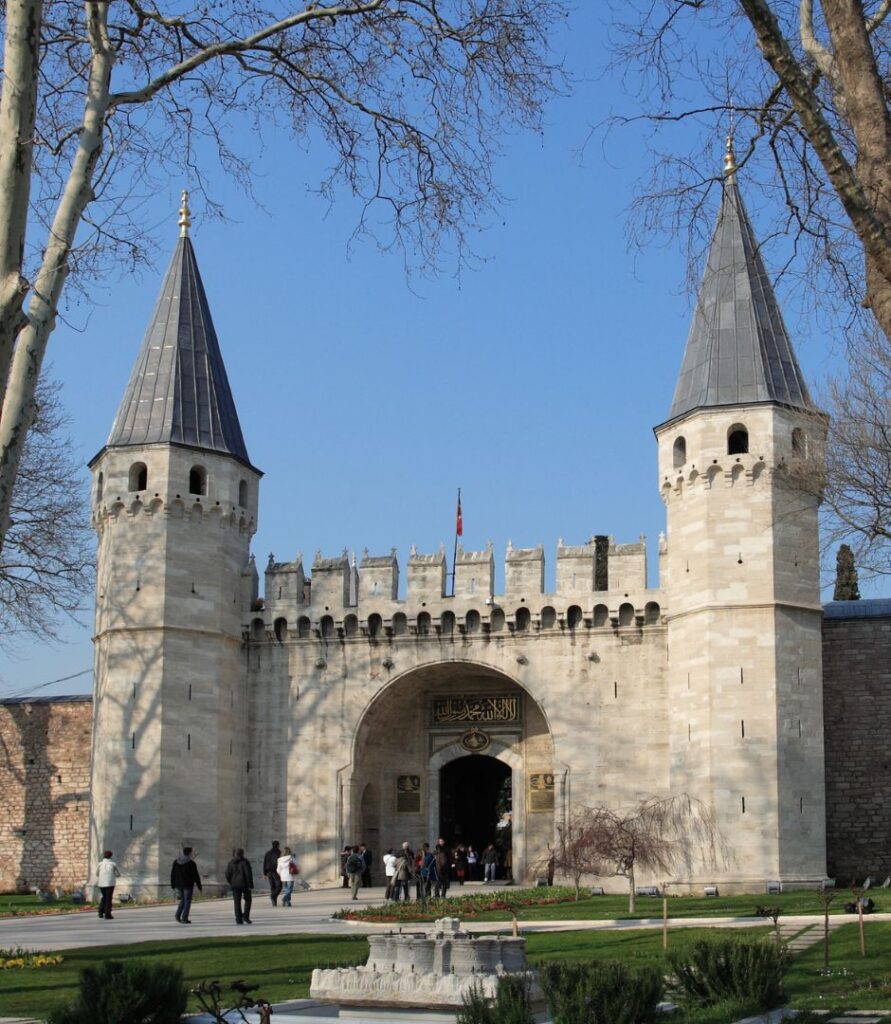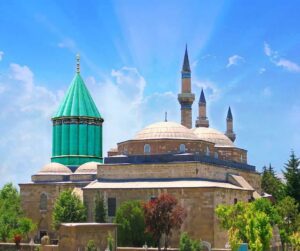Mevlana Museum
Mevlana Museum, located in Konya, Turkey, is a place of great spiritual significance and historical importance. As the mausoleum of the famous Sufi mystic Rumi, it attracts millions of visitors each year who seek to learn about his life, teachings, and the rich heritage of Sufism.
The Legacy of Rumi
Rumi, also known as Mevlana Jalaluddin Rumi, was a 13th-century Persian poet, theologian, and Sufi mystic. His profound spiritual insights and poetic works have inspired countless individuals across the globe. The Mevlana Museum serves as a tribute to his enduring legacy and offers a deep dive into his philosophy.
The History of the Museum
The Mevlana Museum was originally the dervish lodge (tekke) of the Mevlevi order, established by the followers of Rumi. After his death in 1273, his mausoleum was built here, which later transformed into a museum in 1926. The site has since become a pilgrimage destination for those wishing to connect with Rumi’s teachings.
Architectural Marvels of the Mevlana Museum
The Mevlana Museum is not only a spiritual center but also an architectural gem, showcasing the intricate designs and artistic styles of its time.

The Green Dome (Kubbe-i Hadra)
The Symbol of Sufism
The Green Dome, or Kubbe-i Hadra, is one of the most iconic features of the Mevlana Museum. Constructed in 1274, this turquoise-tiled dome stands as a symbol of Sufism and Rumi’s spiritual journey. It is the final resting place of Rumi and his family members, making it a focal point for visitors.
The Intricate Tile Worky
The dome is adorned with exquisite tile work and calligraphy, reflecting the artistry of the Seljuk period. The intricate patterns and designs are not only visually stunning but also carry deep symbolic meanings, representing the spiritual ascent.
The Dervish Cells
The Life of Dervishes
The museum complex includes the cells where the dervishes, followers of Rumi, lived and practiced their spiritual rituals. These cells provide insight into the austere and disciplined lifestyle of the dervishes, who dedicated their lives to the pursuit of divine love and knowledge.
Exhibits and Artifacts
The cells now house various exhibits and artifacts, including manuscripts, musical instruments, and personal items of the dervishes. These displays offer a glimpse into the daily lives and spiritual practices of the Mevlevi order.
The Semahane (Dance Hall)
The Whirling Dervishes
The Semahane, or Dance Hall, is where the famous Sema ceremonies, or whirling dervish dances, were performed. This ritual dance symbolizes the spiritual journey of the soul, spinning towards divine love and enlightenment. The hall’s design facilitates the mesmerizing movements of the dervishes, creating an atmosphere of deep spiritual connection.
The Ritual and Its Significance
The Sema ceremony is a profound expression of devotion and unity with the divine. The whirling dance, accompanied by music and chanting, represents the rotation of the planets and the cycles of life. Witnessing this ritual at the Mevlana Museum is a moving experience that offers a deeper understanding of Sufi spirituality.
Spiritual and Cultural Significance of the Mevlana Museum
The Mevlana Museum is a place where history, culture, and spirituality converge, offering visitors a rich and immersive experience.

The Teachings of Rumi
Reflection and Meditation
Visitors to the Mevlana Museum often find it a place of reflection and meditation. The serene environment and the presence of Rumi’s legacy inspire contemplation and a deeper connection with one’s inner self.
Love and Unity
Rumi’s teachings emphasize love, unity, and the transcendence of the self. His poetry and philosophical writings continue to resonate with people from diverse backgrounds, promoting a message of universal harmony and spiritual awakening.
Cultural Heritage
Preservation Efforts
Efforts to preserve and maintain the Mevlana Museum ensure that this cultural and spiritual treasure remains accessible to future generations. The restoration of the architectural elements and careful conservation of artifacts are ongoing processes that highlight the importance of the site.
Global Influence
Rumi’s influence extends beyond the borders of Turkey, touching the hearts and minds of people worldwide. The Mevlana Museum stands as a testament to his enduring legacy and the universal appeal of his teachings.

Events and Festivals
The Annual Commemoration Ceremony
Every year, in December, Konya hosts the Seb-i Arus festival to commemorate the death of Rumi. This event attracts thousands of visitors and features various cultural and spiritual activities, including Sema performances, lectures, and exhibitions. The festival celebrates Rumi’s life and teachings, fostering a sense of community and shared spirituality.
Throughout the year, the Mevlana Museum hosts workshops, lectures, and seminars that delve into the teachings of Rumi and the principles of Sufism. These events provide opportunities for visitors to engage with scholars and practitioners, deepening their understanding of this profound spiritual tradition.
In conclusion, the Mevlana Museum is more than just a historical site; it is a living testament to the enduring legacy of Rumi and the rich spiritual heritage of Sufism. Whether you are a scholar, a spiritual seeker, or simply a curious traveler, the museum offers a unique and enriching experience that leaves a lasting impression. From the architectural marvels to the profound teachings of Rumi, the Mevlana Museum invites you to embark on a journey of discovery and reflection.

